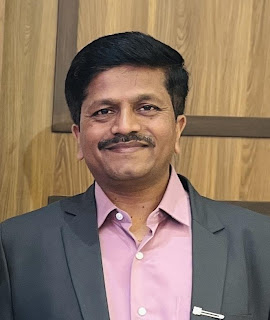Shripad Bankar’s career exemplifies the power of innovation and strategic thinking in driving technological progress. His impact on Comcast’s streaming capabilities is profound, and his work has established new standards for streaming quality and media engagement. As the industry moves forward, Shripad Bankar remains at the forefront, crafting solutions that not only meet but anticipate the needs of tomorrow’s audiences.
David: Today, we’re thrilled to sit down with Shripad Bankar, a highly respected Senior Solution Architect known for his transformative work in streaming technology and digital media. Shripad, it’s great to have you with us here at the conference. Could you tell us a bit about your journey and the path that led you to your current role?
Shripad Bankar: Thank you; I’m glad to be here! My journey began in embedded systems and multimedia applications. Early in my career, I worked on projects that focused on graphics systems and media functionality, which gave me a deep foundation in designing interfaces and optimizing media experiences. Over time, I moved into more complex roles, developing adaptable media players and leading technical initiatives in streaming. Joining Comcast provided the opportunity to truly push the boundaries in streaming and bring new experiences to millions of users.
David: You’ve led some incredible projects at Comcast. Could you share some highlights of your work there?
Shripad Bankar: Certainly. One of the major projects I worked on was the development of the Advanced Adaptive Media Player, or AAMP. This player is used across millions of Comcast devices to deliver HD and 4K content. We designed it to support both DASH and HLS formats, so it adapts smoothly to different network conditions. We also integrated AAMP across various streaming platforms, including Peacock and Sling, and made sure it’s compatible with multiple hardware providers, which is crucial for maintaining performance across all devices.
David: I understand that you also led the Peacock Multiview project for the Olympics. How did that come about?
Shripad Bankar: The Peacock Multiview project was truly exciting. It was designed to offer viewers multiple angles for Olympic events, with seamless audio and caption switching. We wanted to create an interactive and engaging experience for viewers, especially for such a high-profile event. It required precise coordination and an intensive focus on both functionality and user experience. Our goal was to set a new standard for live event streaming, and I’m proud to say the project was a success.
David: One of your recent innovations involved embedding audio into JPEG files, a unique concept. Could you tell us about it?
Shripad Bankar: Yes, that’s an idea close to my heart. The concept is to embed short audio clips directly into JPEG photos to add ambient sounds that capture the essence of a moment. Imagine a picture of a beach that plays soft waves in the background when viewed—it’s a way to enrich memories with both visuals and sound. The approach is efficient, as it doesn’t require extra files and is compatible across platforms. It’s currently in review with Comcast’s invention team, and I’m hopeful it’ll soon be available for people to experience.
David: You’ve also been a part of projects related to monetization, specifically client-side ad insertion. How did this project impact Comcast’s business?
Shripad Bankar: The client-side ad insertion project was a great example of aligning technology with business objectives. It allowed us to place targeted ads within live streams, providing a more personalized experience for viewers while supporting Comcast’s monetization strategies. The technology uses DASH, enabling dynamic ad insertion in live content. It’s rewarding to see that balance—enhancing user experience while also contributing to the company’s revenue goals.
David: It’s clear that standards play a big role in your work. How do you approach this?
Shripad Bankar: Industry standards are essential for ensuring compatibility, quality, and regulatory compliance. In my work, we adhere to standards like DASH, ATSC, and others to maintain interoperability across different devices and platforms. We also incorporated ATSC 1.0 support for Smart TVs recently, which was critical for extending AAMP’s compatibility and adhering to regulations. Following standards allows us to focus on innovation while ensuring our solutions are robust and reliable for users.
David: Finally, what advice would you give to others looking to make a mark in the field of media technology?
Shripad Bankar: Stay curious and always look for ways to improve. Technology is constantly evolving, and in media, especially, the user experience is paramount. I’d also say don’t be afraid to push the boundaries—some of the most rewarding projects I’ve worked on started as ambitious ideas that others thought weren’t possible. It’s that willingness to innovate and adapt that really drives impactful solutions.
David: Thank you, Shripad. It’s been inspiring to hear about your work and the impact you’re making in streaming technology.
Shripad Bankar: Thank you! It’s been a pleasure sharing my journey and insights with you.

